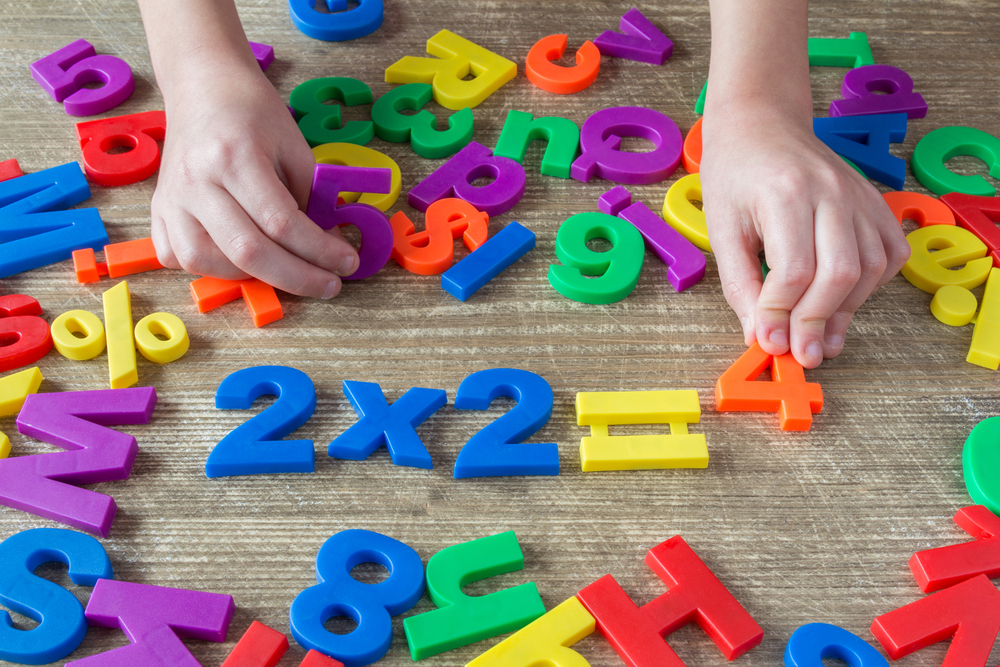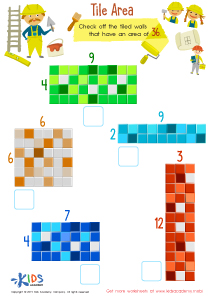Understanding place value Normal Numbers Worksheets for Ages 3-6
5 filtered results
-
From - To
Discover our engaging "Understanding Place Value Normal Numbers Worksheets" designed specifically for children aged 3-6. These worksheets introduce young learners to the foundational concepts of place value in a fun and interactive way. Through colorful illustrations and easy-to-follow exercises, kids will develop essential math skills such as recognizing, comparing, and organizing numbers. Our age-appropriate activities encourage hands-on learning, making abstract concepts tangible and easy to grasp. Ideal for preschool and kindergarten learners, these printable resources promote early mathematical understanding, setting the stage for future success in math! Explore our collection today and watch your child build confidence with numbers!
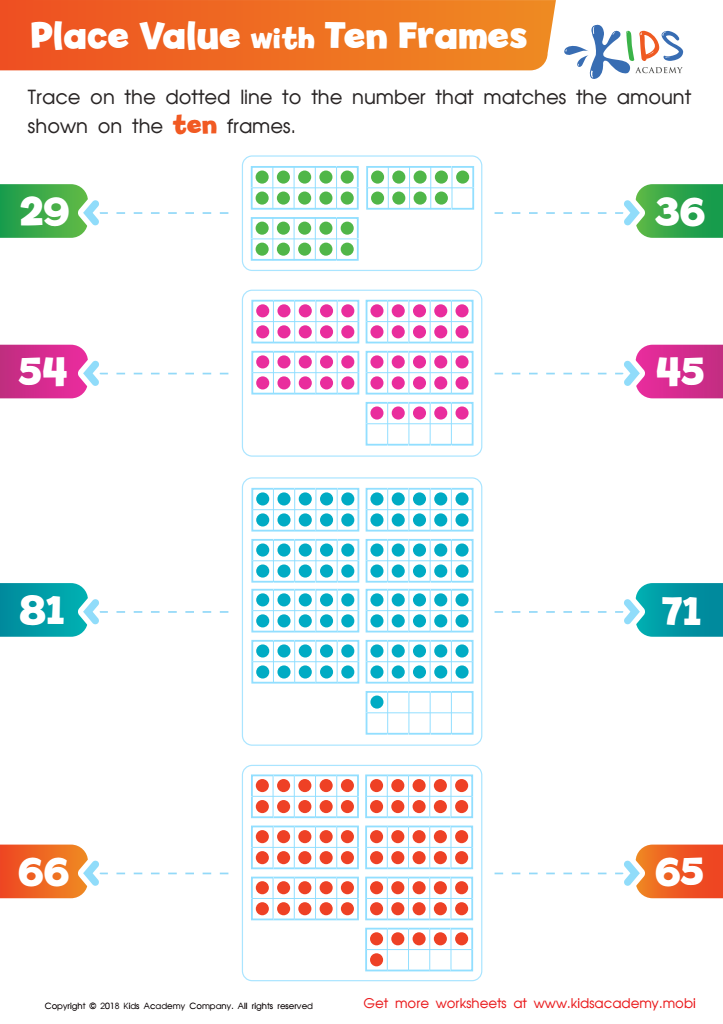

Place Values with Ten Frames Worksheet
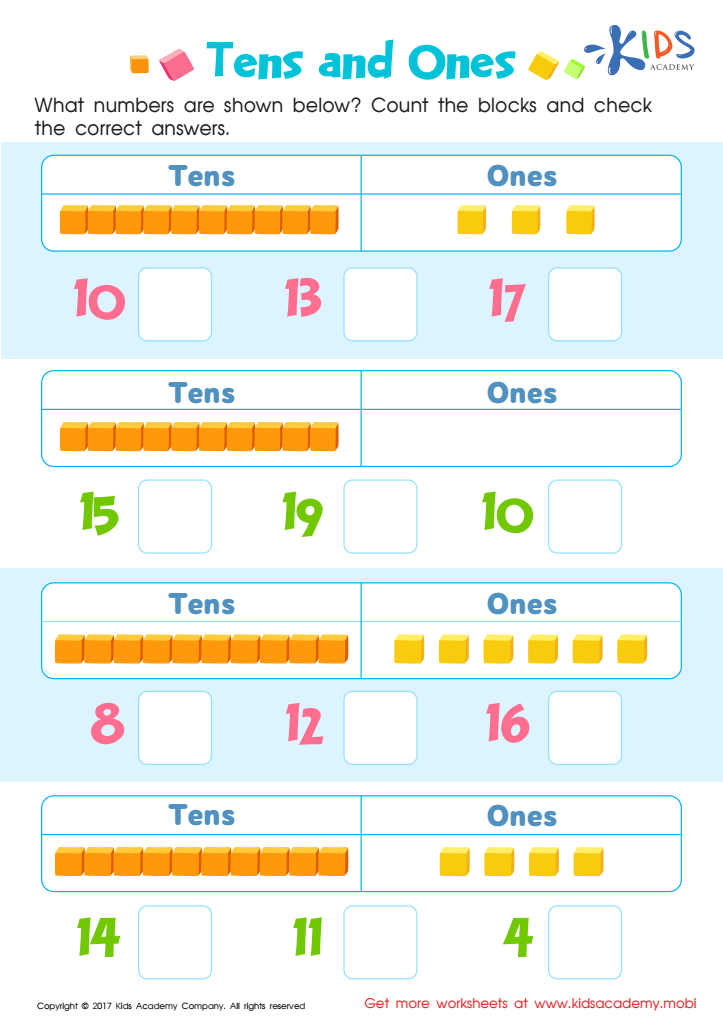

Tens and Ones Worksheet


Trading Tens Worksheet


Practice Place Value Printable
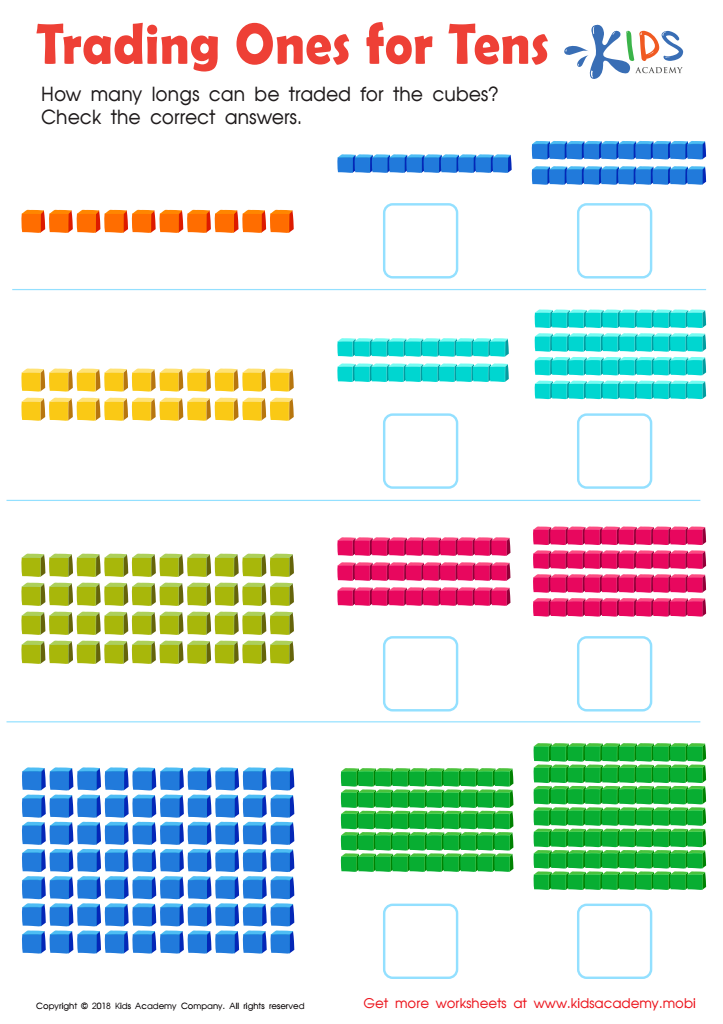

Trading Ones for Tens Worksheet: Part 2
Understanding place value and normal numbers is foundational for young learners aged 3-6 and is crucial for parents and teachers to prioritize in early education. At this stage, children begin to grasp basic numerical concepts, and recognizing the significance of place value (the idea that the position of a digit determines its value) lays the groundwork for more complex mathematical understanding later on.
When children understand place value, they develop better number sense, which is essential for addition, subtraction, and eventually multiplication and division. This early comprehension enables students to see numbers as part of a larger system, encouraging critical thinking as they learn to compare and manipulate numbers.
Moreover, mastering normal numbers helps children progress in their everyday lives, from recognizing amounts during shopping trips to counting classmates in games. Parents and teachers play a vital role by adopting engaging and age-appropriate activities, such as counting games and hands-on manipulatives, which foster a love for learning.
In summary, caring about understanding place value helps establish a solid mathematical foundation and supports cognitive development, problem-solving skills, and positive attitudes towards math that children will carry into their future educational experiences.
 Assign to My Students
Assign to My Students







